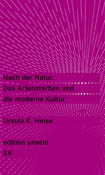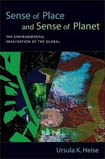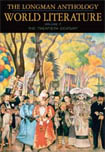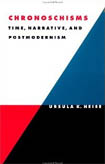 Nach der Natur – Das Artensterben und die moderne Kultur [After Nature: Species Extinction and Modern Culture] (2010) Nach der Natur – Das Artensterben und die moderne Kultur [After Nature: Species Extinction and Modern Culture] (2010)
Wir sehen uns heute mit einem Artenschw konfrontiert, für dessen Ausmaß und Gesc keit es in der Geschichte kaum Präzede Nicht nur wissenschaftlich und politisch, auch kulturell stellt diese Entwicklung eine Herausforderung dar. Ausgestorbene und bende Arten werden in Kunst, Film und Signale für eine Modernisierungskrise, der sich der Mensch letztlich als biologis zu denken sucht. Ursula Heise zeigt in ihrem Essay, wie aus der Umgestaltung alter Erzählmuster im Zeitalter der Globalisierung Wissenschaftlern, Künstlern, Schriftstellern und Regisseuren ein »posthumanes« Bild des Menschen als kosmopolitisches Tier.
purchase on Amazon.com >>
 Sense of Place and Sense of Planet (2008) Sense of Place and Sense of Planet (2008)
Sense of Place and Sense of Planet analyzes the relationship between the imagination of the global and the ethical commitment to the local in environmentalist thought and writing from the 1960s to the present. Part One critically examines the emphasis on local identities and communities in North American environmentalism by establishing conceptual connections between environmentalism and ecocriticism, on one hand, and theories of globalization, transnationalism and cosmopolitanism, on the other. It proposes the concept of “eco-cosmopolitanism” as a shorthand for envisioning these connections and the cultural and aesthetic forms into which they translate. Part Two focuses on conceptualizations of environmental danger and connects environmentalist and ecocritical thought with the interdisciplinary field of risk theory in the social sciences, arguing that environmental justice theory and ecocriticism stand to benefit from closer consideration of the theories of cosmopolitanism that have arisen in this field from the analysis of transnational communities at risk. Both parts of the book combine in-depth theoretical discussion with detailed analyses of novels, poems, films, computer software and installation artworks from the US and abroad that translate new connections between global, national and local forms of awareness into innovative aesthetic forms combining allegory, epic, and views of the planet as a whole with modernist and postmodernist strategies of fragmentation, montage, collage, and zooming.
purchase on Amazon.com >>
|
 Editor, Journey to the Center of the Earth, by Jules Verne (2005) Editor, Journey to the Center of the Earth, by Jules Verne (2005)
In 1864, when Jules Verne published Journey to the Center of the Earth, the idea of a hollow Earth that could be reached through volcanic tubes had already been discredited by science. Why, then, does Verne make it the point of departure for his famous novel of adventure? Ursula K. Heise’s introduction addresses this question, placing Verne into the scientific and cultural contexts of his time, and explaining why this novel remains a compelling read even today. Frederick Amadeus Malleson 1877 translation has been completely revised and updated for this contemporary edition of Verne’s classic novel.
purchase on barnesandnoble.com >>
 Co-Editor, The Longman Anthology of World Literature, Volume F: 20th Century (2003) Co-Editor, The Longman Anthology of World Literature, Volume F: 20th Century (2003)
The Longman Anthology of World Literature, Volume F offers a fresh presentation of the varieties of world literature from the 20th Century. The editors of the anthology have sought to find economical ways to place within their cultural contexts, and have select and grouped our materials in ways intended foster connections and conversations across anthology, between eras as well as regions. The anthology includes lyric poetry, drama, and prose narrative, with many works in their Classic major authors are presented together with more recently recovered voices as the editors seek to suggest something of the literary dialogue of each region and period. Engaging introductions, scholarly annotations, regional maps, pronunciation guides, and illustrations provide a supportive editorial setting. For anyone interested in world literature.
purchase on Amazon.com >>
 Chronoschisms: Time, Narrative, and Postmodernism (1997) Chronoschisms: Time, Narrative, and Postmodernism (1997)
In Chronoschisms Ursula Heisse explores the way developments in communication and information technology have led to the emergence of a new culture of time in Western socities. Drawing on theories of postmodernism and narratology, she shows how postmodern narratives break up the concept of plot into a spectrum of contradictory story lines allowing new conceptions of history and posthistory to emerge. This wideranging study offers new readings of postmodernist theory and fresh insight into the often vexed relationship between literature and science.
purchase on Amazon.com >>
|
 Editor, Journey to the Center of the Earth, by Jules Verne (2005)
Editor, Journey to the Center of the Earth, by Jules Verne (2005)
 Nach der Natur – Das Artensterben und die moderne Kultur [After Nature: Species Extinction and Modern Culture] (2010)
Nach der Natur – Das Artensterben und die moderne Kultur [After Nature: Species Extinction and Modern Culture] (2010) Sense of Place and Sense of Planet (2008)
Sense of Place and Sense of Planet (2008) Co-Editor, The Longman Anthology of World Literature, Volume F: 20th Century (2003)
Co-Editor, The Longman Anthology of World Literature, Volume F: 20th Century (2003) Chronoschisms: Time, Narrative, and Postmodernism (1997)
Chronoschisms: Time, Narrative, and Postmodernism (1997)